First and foremost, IF you are reading this post because you are concerned you have an issue, PLEASE refer to our warranty. If you are within the warranty period, please email me directly in order to determine if your concern is within the limitations of our warranty. Email contact is the appropriate and only way we can address your concern regarding warranty information. If you have a fit question, our Lalabye Baby Chat group on Facebook is a great place to ask for fit help. The mommas there are very helpful!
Our customers give high praise for the quality and longevity of our cloth diapers, but there are a lot of factors that can come into play in regards to how and when cloth diaper materials wear out. Just because a diaper is made to fit from birth to potty training doesn’t mean it is going to last that long if it’s not taken care of properly. Knowing why wear and tear occurs can help you to prevent it and keep your diapers looking and working well for years to come.
What is considered normal wear and tear?
- pilling
- staining (Watch out for that newborn poop! The sun works miracles to remove those stains.)
- fading
- snags from other diapers/your washing machine
- broken snaps from your washing machine or impact in the dryer (Some people use tennis balls or heavier likewise products in their dryer that can crack a snap if it hits the diaper just right (or wrong). Stick to wool dryer balls to prevent this issue.)
- weaker snaps over time (The repeated usage of plastic does wear down eventually, but we are always willing to replace those snaps for you if you send your diaper to us! Just email me at info@lalabyebaby.com .)
- the gradual relaxation of elastics
- eventual balding/holes in natural fibers
Most of these issues are easy, quick fixes that you can do yourself or very cheaply if they crop up. Many of these issues do not affect the function of the diaper at all and are simply aesthetic issues that are able to be lived with without issue.
Why do cloth diapers wear out?
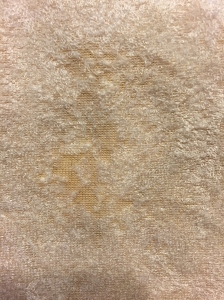
Natural fibers cannot withstand extreme wear and washing conditions without breaking down. Think of this: how stretched and faded are your favorite shirts after a year or two? How often do you replace your socks and underwear? Cloth diapers are worn and washed far more often than an average pair of underwear, and nearly three times as often as your favorite pair of jeans.
A cloth diaper is exposed to washing and wearing more often than any other piece of clothing, which will eventually lead to the wearing out of the fabrics that make up the diaper.
That being said, if you take the precautions to keep your diapers in great condition, you can slow down the wear process immensely.
What is not normal wear and tear?
- total delamination IF following proper wash and usage care (This does not include wrinkling or scratches on the TPU, which is more often than not a user error. Total delamination means the lamination has completely removed itself from the polyester interior of the shell, causing leaking. )

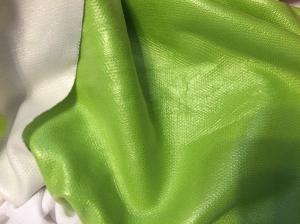
- balding/holes IF following proper wash and usage care
The majority of abnormal wear and tear is due to extreme wash routines that do not follow care guidelines, including high water or dryer temperatures, hanging out to dry in sun and leaving for extended periods of time, and/or the use or overuse of non-recommended chemicals like bleach, borax, oxygen-bleach, etc.


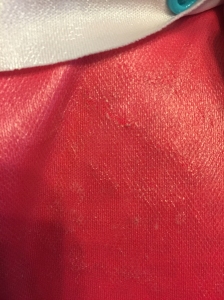
How can I make my diapers last as long as possible?
– Maintain a good stash size. This is your greatest excuse to #buyallthediapers . The more diapers you have, the lesser the wear on each one in your rotation. For example, someone with 14 diapers in their stash who is washing every day is going to have wear more quickly than someone with 28 diapers, etc. There is no magic number for how many diapers you “should” have (because some families are diapering more than one child at once), but the general rule of thumb is to take the number of diaper changes you complete a day and multiply that number by at least 2. This gives you enough diapers to wash every other day.
–Stop unnecessarily stripping/sanitizing your diapers. The only time bleach should be used on your diapers is if mold or yeast is present or if you are sanitizing gently used diapers, and even then, it should be 1/4 cup of bleach for an entire large wash load- that’s it. NO SOAKING. To whiten and brighten your diapers or stained inserts, avoid bleach: use the sun instead! Not only does it whiten, it sanitizes! Also, there is no need to routinely strip your diapers. If you have a solid wash routine and an effective detergent, you shouldn’t be running into issues at all. There are a lot of “strip happy” recommendations out there, and some of the preached recipes for stripping are in NO way recommended by any cloth diaper company because of the damage it will cause to the materials. Bleach does not remove detergent or hard water or ammonia build-up; the only thing it removes is bacteria and the fabric fibers, eating away at the cloth and causing balding, holes, and weakening in the fabrics of the diaper. If you are running into problems constantly, you should be looking at your wash routine first and foremost, not stripping all the time.
–Follow the wash instructions on the care label of the diaper. If you need more detailed information on our washing recommendations, check them out here on our retail page.
–Wash often enough (every 2-3 days) and alone. Diapers that sit with urine in them will break down faster than those that are cleaned properly in a timely manner. They also will not be given the chance to develop other yucky issues that will impair the fabrics such as mold. Washing diapers only with other diapers prevents clothing from pulling and getting caught on the diapers (think bra hooks or zippers on jeans), which can cause tears or snags in the fabrics.
–Change your baby often (every 2-3 hours). Yes, cloth diapers are super absorbent, but just because you can go more than three hours without leaks doesn’t mean you should. Keep that baby feeling clean and dry! Change that baby! The more saturated that diaper is with urine, the faster those fabrics will break down as they wait for wash day.
–Line dry shells to prevent excessive heat and wear to the TPU laminate. This will prevent untimely delamination or cracking in the TPU, which can cause leaks. Important to note: Line drying outside in very hot temperatures is to be avoided for extended periods of time. Leave them out in the sun just long enough for it to dry. Approximately 1 hour at most.
–If you DO dry in the dryer, dry on low only and make sure the shells are completely cooled before stuffing so as to prevent stretching (which can potentially cause cracks in the laminate) of the TPU.
– Remove jewelry from hands before stuffing diapers. It is easy to snag the TPU with a wedding ring, causing rips or tears in the fabric.
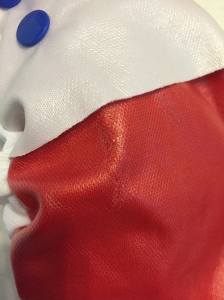
–Line dry shells horizontally. This prevents unnecessary stress on the elastics during drying time, and reduces the number of cloth pins you use because you snap the tabs together- less work for everybody!
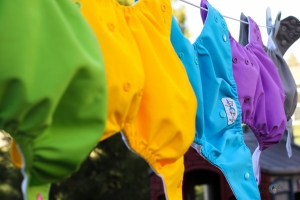
–Use the laundry tabs for aplix closures. Our newborn diapers use aplix closures, so they also have a laundry tab for you to stick the aplix to in order to keep the aplix from catching onto other diapers or inserts, which can cause tugging and snagging. *Please note: washing machines with agitators have been known to cause unexpected damage to cloth diapers. This can include damage to inserts and/or shells.
–When storing cloth diapers long term, do it right. In between kids, keep cloth diapers in appropriate storage: temperature and humidity controlled environment, in a breathable container (NOT space saver bags, plastic bags, or plastic totes- use a pillow case, cardboard box (that is not sealed shut with gobs of packing tape), or a well ventilated storage container like this one from Ikea), and take them out and wash them 2-3 times a year to keep elastics from dry rotting and to prevent damage from dust-mites.
Again, if you have a question regarding the condition of your diaper, PLEASE review our warranty and email me directly in order to determine if your concern is within the limitations of our warranty. Email contact is the appropriate and only way we can address your concern regarding warranty information. Please keep in mind that you must be the original owner of the diaper. The warranty does not extend to gently used or second owner diapers as well as diapers that have been modified in any way (embroidery, snap changes, etc).
If you are having leaking, odor, or fit issues, we at Lalabye Baby are ready to help you to be successful with your diapers. Please contact us. We have many helpful tips and can usually pinpoint one or two simple things you can do to eliminate the issues you are facing.
Happy cloth diapering!

These are some really helpful tips to follow–my diapers seem to wear out so quickly.
LikeLike
These are such helpful tips to follow! Thanks for posting!
LikeLike
Thank you for sharing this. As we are in the process of potty training (excuse me while I ugly cry!) and I want to save my diapers, I knew they should t be in an air tight container but I didn’t know I should wash a couple of times a year! 🙂 thank you for being an awesome company!
LikeLike